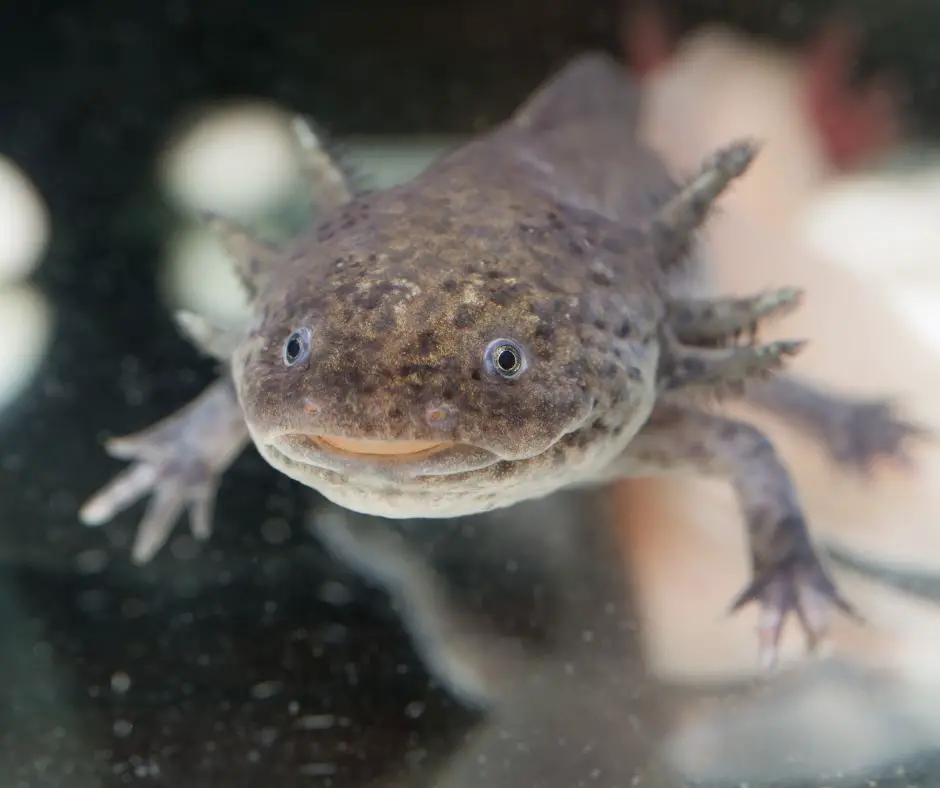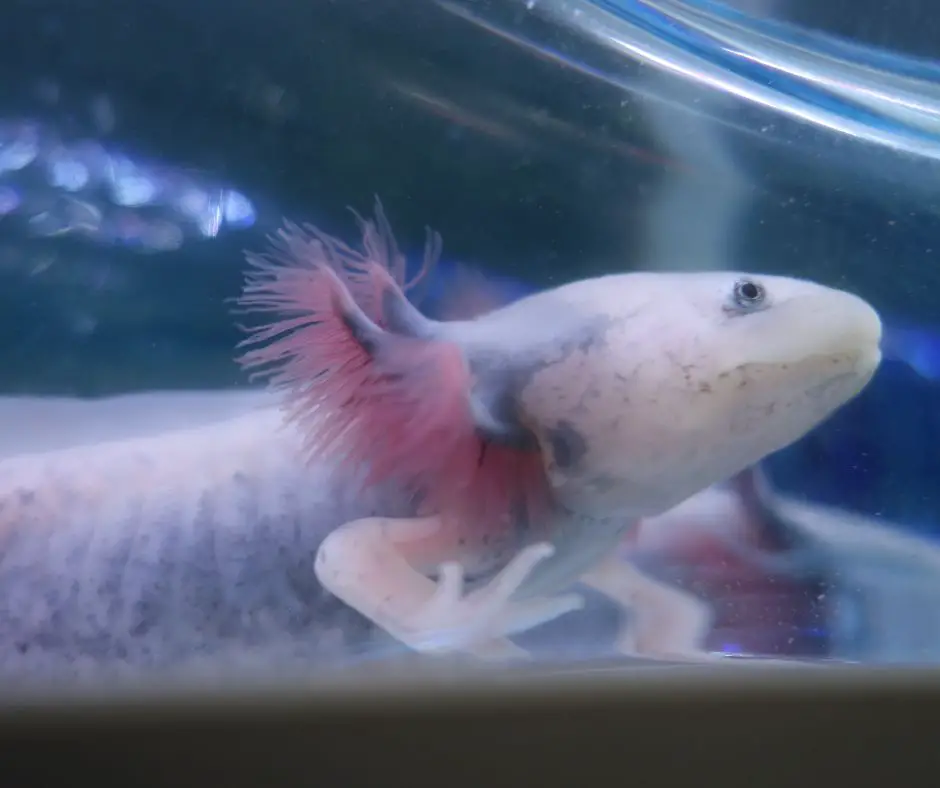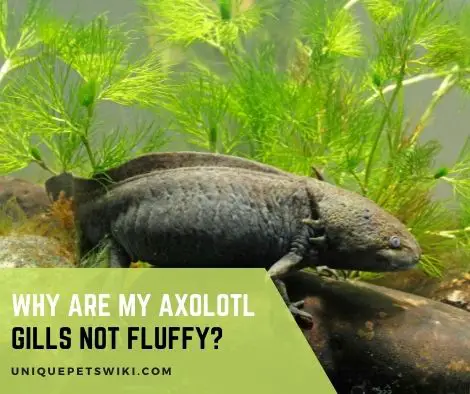Axolotls are marine creatures with fluffy, feathery gills. They use their gills to absorb oxygen from the water, just like other marine animals. It is critical to maintain their gill health to keep them healthy and happy.
So, Why Are My Axolotl Gills Not Fluffy?
People must be aware of axolotls’ healthy appearance and gills. Knowledge of an axolotl’s healthy physique aids owners in recognizing when something is wrong with their pets.
This article aims to explain why axolotl gills don’t become fluffy or feathered. The regenerative capacity of axolotls will also be discussed in this article.
So, keep reading to the end of the article to learn how to encourage the healthy growth of axolotl gills.
Why Are My Axolotl Gills Not Fluffy?
Your Axolotl gills are not fluffy due to poor water quality or high oxygen levels in the tank. The gill filaments get burned when there is a high quantity of ammonia in the water.
Hence, the axolotl’s gills lose their fluffy appearance. However, they can renew the gill filaments.
Bacterial and fungal infections also lead to non-fluffy axolotl gills. As a result, the actual cause must be discovered.
Always keep an eye on the water parameters and maintain ammonia and nitrites at zero.

High Oxygen Concentration
The dissolved oxygen in the water is absorbed by the gills of axolotls. When there is a lack of oxygen, the gills become long, fluffy, and feathery.
Long and feathery gills expose more surface area to the water, allowing them to absorb more oxygen.
Gill filaments do not grow long in the presence of a high concentration of oxygen in the tank, since they get enough with a higher volume of oxygen.
If you maintain optimal aquarium parameters, you won’t need to worry about your axolotl not having fluffy gills.
Exposure to Poor Water Quality
Axolotls suffer from a variety of health concerns due to poor water quality. Ammonia burn and gill filament damage are caused by high ammonia and nitrate levels in the water.
The deterioration of gill filaments results in non-feathery and non-fluffy gills. Ammonia and nitrates can cause axolotl gills to shrink, especially when damaged.
When axolotl gills are exposed to low-quality water for an extended period, their gills fall off, making them unattractive.
The gills of unhealthy axolotls become non-feathery, too small, and are curled with broken gill filaments. You should change the water as soon as you observe these symptoms.
To keep the water quality good and healthy for axolotls, you can add an air pump and a filter booster.
API 5-in-1 Test Strips Freshwater and Saltwater Aquarium Test Strips
- Contains one (1) API 5-IN-1 TEST STRIPS Freshwater and Saltwater Aquarium Test Strips 25-Count Box
- Monitors levels of pH, nitrite, nitrate carbonate and general water hardness in freshwater and saltwater aquariums
- Dip test strips into aquarium water and check colors for fast and accurate results
- Helps prevent invisible water problems that can be harmful to fish and cause fish loss
- Use for weekly monitoring and when water or fish problems appear
Last update on 2022-12-30 / Affiliate links / Images from Amazon Product Advertising API
Will Axolotl Gill Filaments Grow Back?
Axolotls can regrow their limbs, gill filaments, and other organs, as long as you feed and care for them properly.
As they get older, their ability to regenerate declines. As a result, juvenile axolotls have a better chance of regrowing their lost organ than older adult axolotls.
The gill stalk of adult axolotls does not renew. On the other hand, young axolotls may rebuild their gill stalks with sufficient care and feeding. The regenerated gill stalk will not look and operate just like the one that was lost.
How Do You Promote Gill Growth in Axolotls?
Maintaining water quality and oxygen levels in the tank is critical for axolotl gill growth.
The growth of gill filaments is aided by a little lower oxygen concentration in the tank. Axolotls produce hormones that encourage the growth of their gills when oxygen levels are low.
If your aquarium has an air pump, you can shut it off to encourage gill growth.
If, on the other hand, you notice your axolotl floating and gulping air at the water’s surface. Because there is a lack of oxygen available to axolotls, you must engage the air pump.

How to Know if Axolotl Gills Are Healthy?
The gills of a healthy axolotl are fluffy, long, feathery, pink, active, and straight. Infections, water quality, oxygen levels, and trauma can all affect gill health.
Axolotl body extremities, especially gills, provide information on the axolotl’s health.
As a result, keep an eye on the gills and get medical advice if you notice any signs of disease.
Axolotl: A Complete Pet Owner’s Guide
- Brown, Lolly (Author)
- English (Publication Language)
- 132 Pages - 09/07/2013 (Publication Date) - Pack & Post Plus, LLC (Publisher)
Last update on 2022-12-29 / Affiliate links / Images from Amazon Product Advertising API
FAQs
How do you heal axolotl gills?
Axolotls’ gills and gill filaments can regrow. If given sufficient care and nutrition, young axolotls can regenerate their gill stalks. When an adult axolotl’s gills and gill stalk are damaged, it’s tough to regrow them.
What color should axolotl gills be?
Axolotl gills are pink or darker reddish-brown in color. Stress, sickness, or poor water quality can all cause a color change.
A low oxygen concentration also causes gill color to shift and gills to darken. Consult a veterinarian as soon as you observe a change in the color of your axolotl’s gills.
What does a sick axolotl look like?
A sick axolotl appears lethargic, irresponsive, displays a lack of appetite, is stressed, sheds gills, and spends most of its time resting at the bottom.
The signs and symptoms of illness differ depending on the type and severity of the illness. You must detect the signs and contact a veterinarian to get the condition treated.
Why does my axolotl have small gills?
Axolotls have small gills when the aquarium water contains high oxygen concentrations.
To encourage the growth of gills, you can lower the oxygen concentration by pausing the air pumps. You can restart the air pumps once you see your axolotl floating at the surface, gulping air.
Conclusion
Axolotls with fluffy, feathery, and long gills look appealing and beautiful. Axolotls, without fluffy gills, suggest axolotls have been exposed to poor water quality or high oxygen levels.
High levels of ammonia and nitrates in the water inhibit gill growth and can cause gill shrinking.
If given sufficient care, young axolotls can rebuild their gill filaments and stalks. Maintain a low oxygen concentration to encourage the growth of your axolotl’s gills.
However, it is vital to continue checking the parameters, because it might be stressful and harmful to axolotls.


